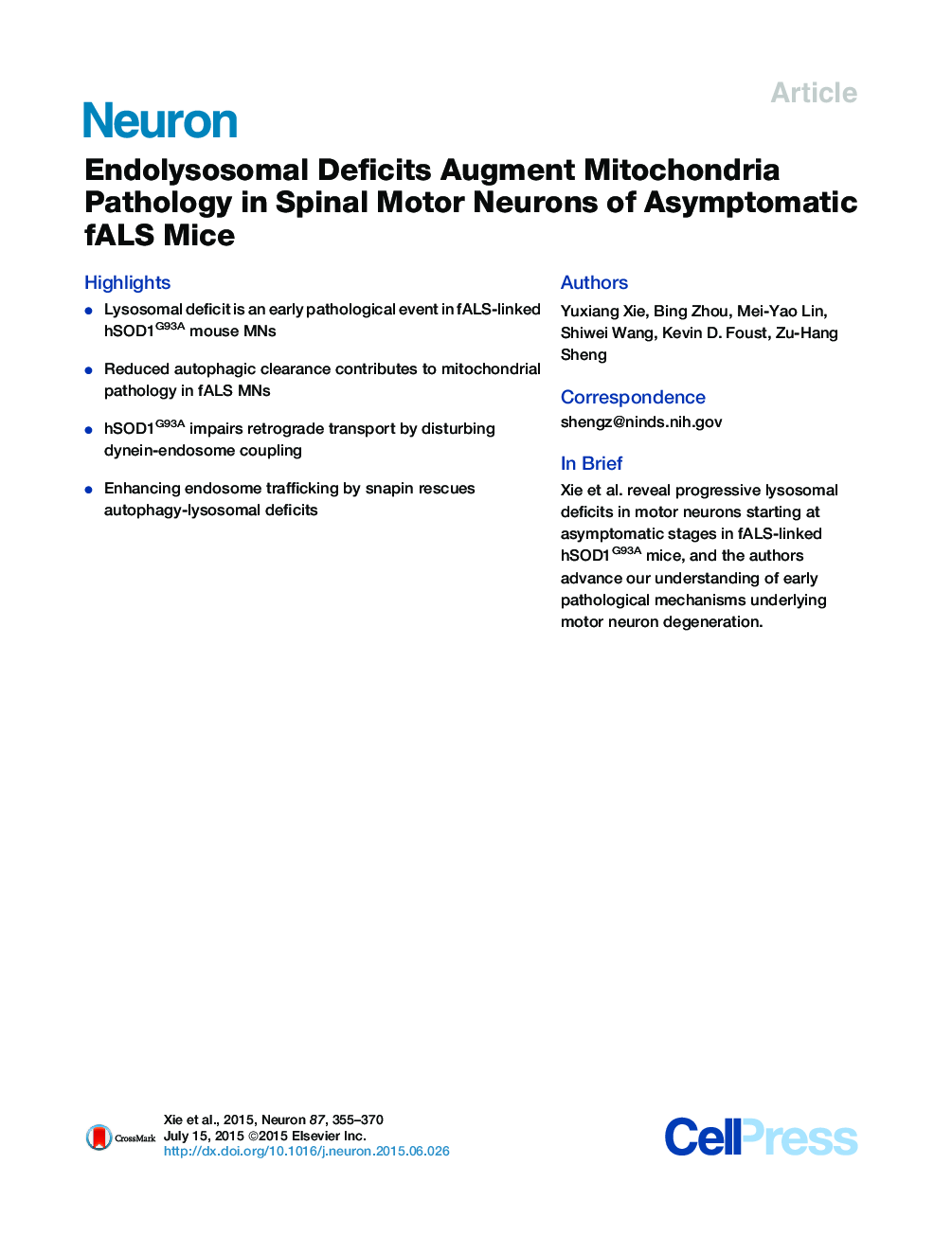| کد مقاله | کد نشریه | سال انتشار | مقاله انگلیسی | نسخه تمام متن |
|---|---|---|---|---|
| 4320911 | 1291552 | 2015 | 16 صفحه PDF | دانلود رایگان |

• Lysosomal deficit is an early pathological event in fALS-linked hSOD1G93A mouse MNs
• Reduced autophagic clearance contributes to mitochondrial pathology in fALS MNs
• hSOD1G93A impairs retrograde transport by disturbing dynein-endosome coupling
• Enhancing endosome trafficking by snapin rescues autophagy-lysosomal deficits
SummaryOne pathological hallmark in ALS motor neurons (MNs) is axonal accumulation of damaged mitochondria. A fundamental question remains: does reduced degradation of those mitochondria by an impaired autophagy-lysosomal system contribute to mitochondrial pathology? We reveal MN-targeted progressive lysosomal deficits accompanied by impaired autophagic degradation beginning at asymptomatic stages in fALS-linked hSOD1G93A mice. Lysosomal deficits result in accumulation of autophagic vacuoles engulfing damaged mitochondria along MN axons. Live imaging of spinal MNs from the adult disease mice demonstrates impaired dynein-driven retrograde transport of late endosomes (LEs). Expressing dynein-adaptor snapin reverses transport defects by competing with hSOD1G93A for binding dynein, thus rescuing autophagy-lysosomal deficits, enhancing mitochondrial turnover, improving MN survival, and ameliorating the disease phenotype in hSOD1G93A mice. Our study provides a new mechanistic link for hSOD1G93A-mediated impairment of LE transport to autophagy-lysosomal deficits and mitochondrial pathology. Understanding these early pathological events benefits development of new therapeutic interventions for fALS-linked MN degeneration.
Journal: - Volume 87, Issue 2, 15 July 2015, Pages 355–370